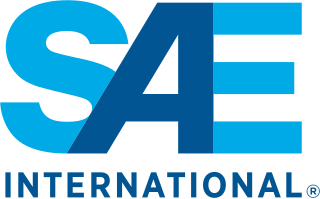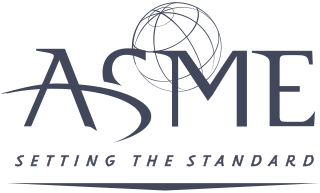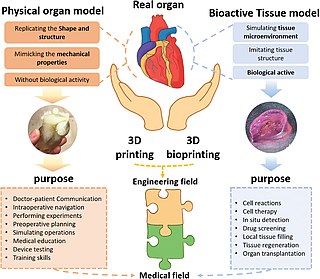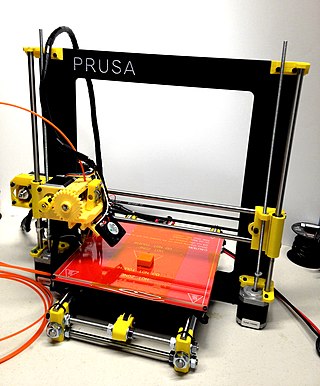
Oregano is a species of flowering plant in the mint family Lamiaceae. It was native to the Mediterranean region, but widely naturalised elsewhere in the temperate Northern Hemisphere.

Theodore Harold Maiman was an American engineer and physicist who is widely credited with the invention of the laser. Maiman's laser led to the subsequent development of many other types of lasers. The laser was successfully fired on May 16, 1960. In a July 7, 1960, press conference in Manhattan, Maiman and his employer, Hughes Aircraft Company, announced the laser to the world. Maiman was granted a patent for his invention, and he received many awards and honors for his work. His experiences in developing the first laser and subsequent related events are recounted in his book, The Laser Odyssey, later being republished in 2018 under a new title, The Laser Inventor: Memoirs of Theodore H. Maiman.

SAE International, formerly named the Society of Automotive Engineers, is a United States-based, globally active professional association and standards developing organization for engineering professionals in various industries. SAE International's world headquarters is in Warrendale, Pennsylvania, 20 miles north of Pittsburgh, Pennsylvania. Principal emphasis is placed on global transport industries such as aerospace, automotive, and commercial vehicles. The organization adopted the name SAE International to reflect the broader emphasis on mobility.

The American Society of Mechanical Engineers (ASME) is an American professional association that, in its own words, "promotes the art, science, and practice of multidisciplinary engineering and allied sciences around the globe" via "continuing education, training and professional development, codes and standards, research, conferences and publications, government relations, and other forms of outreach." ASME is thus an engineering society, a standards organization, a research and development organization, an advocacy organization, a provider of training and education, and a nonprofit organization. Founded as an engineering society focused on mechanical engineering in North America, ASME is today multidisciplinary and global.

3D printing or additive manufacturing is the construction of a three-dimensional object from a CAD model or a digital 3D model. It can be done in a variety of processes in which material is deposited, joined or solidified under computer control, with the material being added together, typically layer by layer.

3D Systems, headquartered in Rock Hill, South Carolina, is a company that engineers, manufactures, and sells 3D printers, 3D printing materials, 3D scanners, and offers a 3D printing service. The company creates product concept models, precision and functional prototypes, master patterns for tooling, as well as production parts for direct digital manufacturing. It uses proprietary processes to fabricate physical objects using input from computer-aided design and manufacturing software, or 3D scanning and 3D sculpting devices.
Olgierd Cecil Zienkiewicz was a British academic of Polish descent, mathematician, and civil engineer. He was born in Caterham, England. He was one of the early pioneers of the finite element method. Since his first paper in 1947 dealing with numerical approximation to the stress analysis of dams, he published nearly 600 papers and wrote or edited more than 25 books.

Rapid prototyping is a group of techniques used to quickly fabricate a scale model of a physical part or assembly using three-dimensional computer aided design (CAD) data. Construction of the part or assembly is usually done using 3D printing or "additive layer manufacturing" technology.
Humanitarian engineering is the application of engineering for humanitarian aid purposes. As a meta-discipline of engineering, humanitarian engineering combines multiple engineering disciplines in order to address many of the world's crises and humanitarian emergencies, especially to improve the well-being of marginalized populations.
Bernard Amadei is a professor of civil engineering at the University of Colorado Boulder, founding president of Engineers Without Borders (USA), co-founder of the Engineers Without Borders-International Network, and founding director of the Mortenson Center in Engineering for Developing Communities. He is also a recipient of multiple awards and distinctions and holds seven honorary doctoral degrees.
Open-source appropriate technology (OSAT) is appropriate technology developed through the principles of the open-design movement. Appropriate technology is technology designed with special consideration for the environmental, ethical, cultural, social, political, and economic aspects of the community it is intended for. Open design is public and licensed to allow it to be used, modified and distributed freely.

Neri Oxman is an American–Israeli designer and professor known for art and architecture that combines design, biology, computing, and materials engineering. She coined the phrase "material ecology" to define her work.

Open Source Ecology (OSE) is a network of farmers, engineers, architects and supporters, whose main goal is the eventual manufacturing of the Global Village Construction Set (GVCS). As described by Open Source Ecology "the GVCS is an open technological platform that allows for the easy fabrication of the 50 types of industrial machines that it takes to build a small civilization with modern comforts". Groups in Oberlin, Ohio, Pennsylvania, New York and California are developing blueprints, and building prototypes in order to test them on the Factor e Farm in rural Missouri. 3D-Print.com reports that OSE has been experimenting with RepRap 3-D printers, as suggested by academics for sustainable development.

Three dimensional (3D) bioprinting is the utilization of 3D printing–like techniques to combine cells, growth factors, bio-inks, and/or biomaterials to fabricate biomedical parts that imitate natural tissue characteristics, form functional biofilms, and assist in the removal of pollutants. 3D bioprinting has uses in fields such as wastewater treatment, environmental remediation, and corrosion prevention. 3D bioprinting can produce functional biofilms which can assist in a variety of situations. The 3D bioprinted biofilms host functional microorganisms which can facilitate pollutant removal. Generally, 3D bioprinting can utilize a layer-by-layer method to deposit materials known as bio-inks to create tissue-like structures that are later used in various medical and tissue engineering fields. 3D bioprinting covers a broad range of bioprinting techniques and biomaterials. Currently, bioprinting can be used to print tissue and organ models to help research drugs and potential treatments. Nonetheless, translation of bioprinted living cellular constructs into clinical application is met with several issues due to the complexity and cell number necessary to create functional organs. However, innovations span from bioprinting of extracellular matrix to mixing cells with hydrogels deposited layer by layer to produce the desired tissue. In addition, 3D bioprinting has begun to incorporate the printing of scaffolds which can be used to regenerate joints and ligaments.

Joshua M. Pearce is an academic engineer at Western University and Michigan Tech known for his work on protocrystallinity, photovoltaic technology, open-source-appropriate technology, and open-source hardware including RepRap 3D printers.

Fused filament fabrication (FFF), also known as fused deposition modeling, or filament freeform fabrication, is a 3D printing process that uses a continuous filament of a thermoplastic material. Filament is fed from a large spool through a moving, heated printer extruder head, and is deposited on the growing work. The print head is moved under computer control to define the printed shape. Usually the head moves in two dimensions to deposit one horizontal plane, or layer, at a time; the work or the print head is then moved vertically by a small amount to begin a new layer. The speed of the extruder head may also be controlled to stop and start deposition and form an interrupted plane without stringing or dribbling between sections. "Fused filament fabrication" was coined by the members of the RepRap project to give an acronym (FFF) that would be legally unconstrained in its use.

EnvisionTEC is a privately held global company that develops, manufactures and sells more than 40 configurations of desktop and production 3D printers based on seven several distinct process technologies that build objects from digital design files. Founded in 2002, the company now has a corporate headquarters for North America, located in Dearborn, Mich., and International headquarters in Gladbeck, Germany. It also has a production facility in the Greater Los Angeles area, as well as additional facilities in Montreal, for materials research, in Kiev, Ukraine, for software development, and in Woburn, Mass, for robotic 3D printing research and development. Today, the company's 3D Printers are used for mass customized production and to manufacture finished goods, investment casting patterns, tooling, prototypes and more. EnvisionTEC serves a variety of medical, professional and industrial customers. EnvisionTEC has developed large customer niches in the jewelry, dental, hearing aid, medical device, biofabrication and animation industries. EnvisionTEC is one of the few 3D printer companies globally whose products are being used for real production of final end-use parts.

Andrew W. Jenike was an American engineer who developed and expanded the science of bulk material handling. He founded and served as company president for engineering consulting firm Jenike & Johanson, Inc. and published Utah Engineering Experiment Station Bulletins 123 and 108, which introduce the idea of mass flow.
Eleni Chatzi is a Greek civil engineer, researcher, and an associate professor and Chair of Structural Mechanics and Monitoring at the Department of Civil, Environmental and Geomatic Engineering of the Swiss Federal Institute of Technology in Zurich.

Microgravity bioprinting is the utilization of 3D bioprinting techniques under microgravity conditions to fabricate highly complex, functional tissue and organ structures. The zero gravity environment circumvents some of the current limitations of bioprinting on Earth including magnetic field disruption and biostructure retention during the printing process. Microgravity bioprinting is one of the initial steps to advancing in space exploration and colonization while furthering the possibilities of regenerative medicine.















